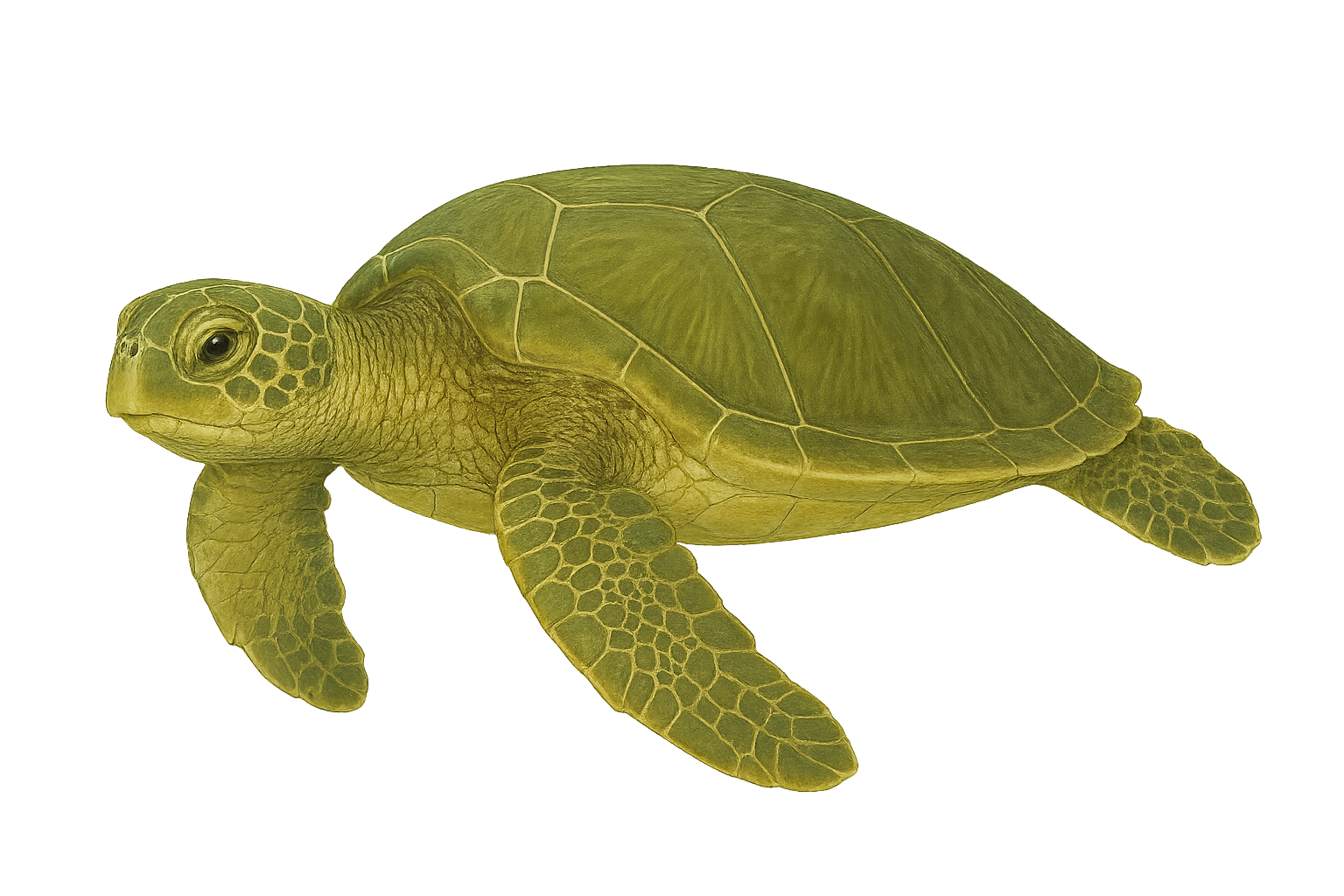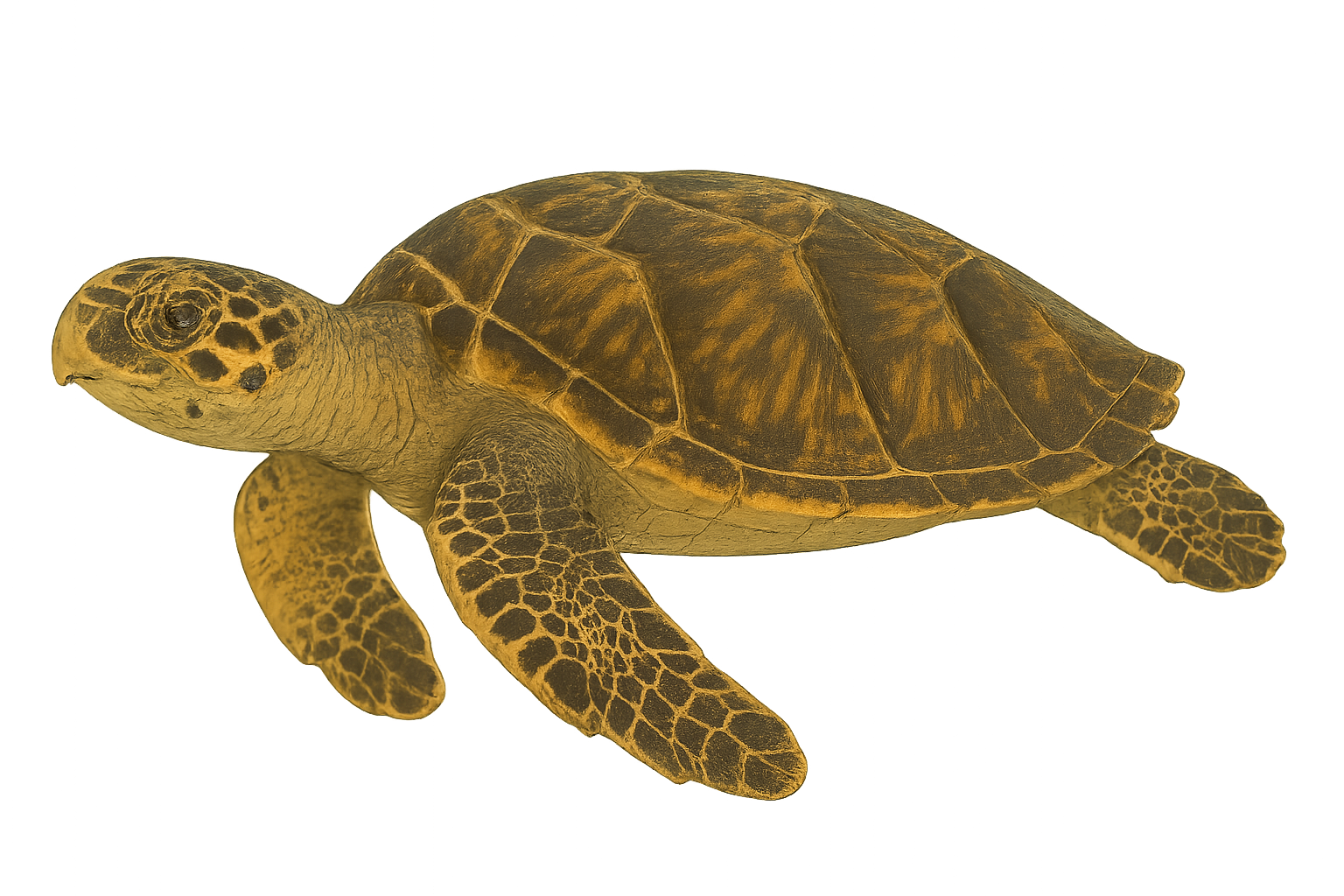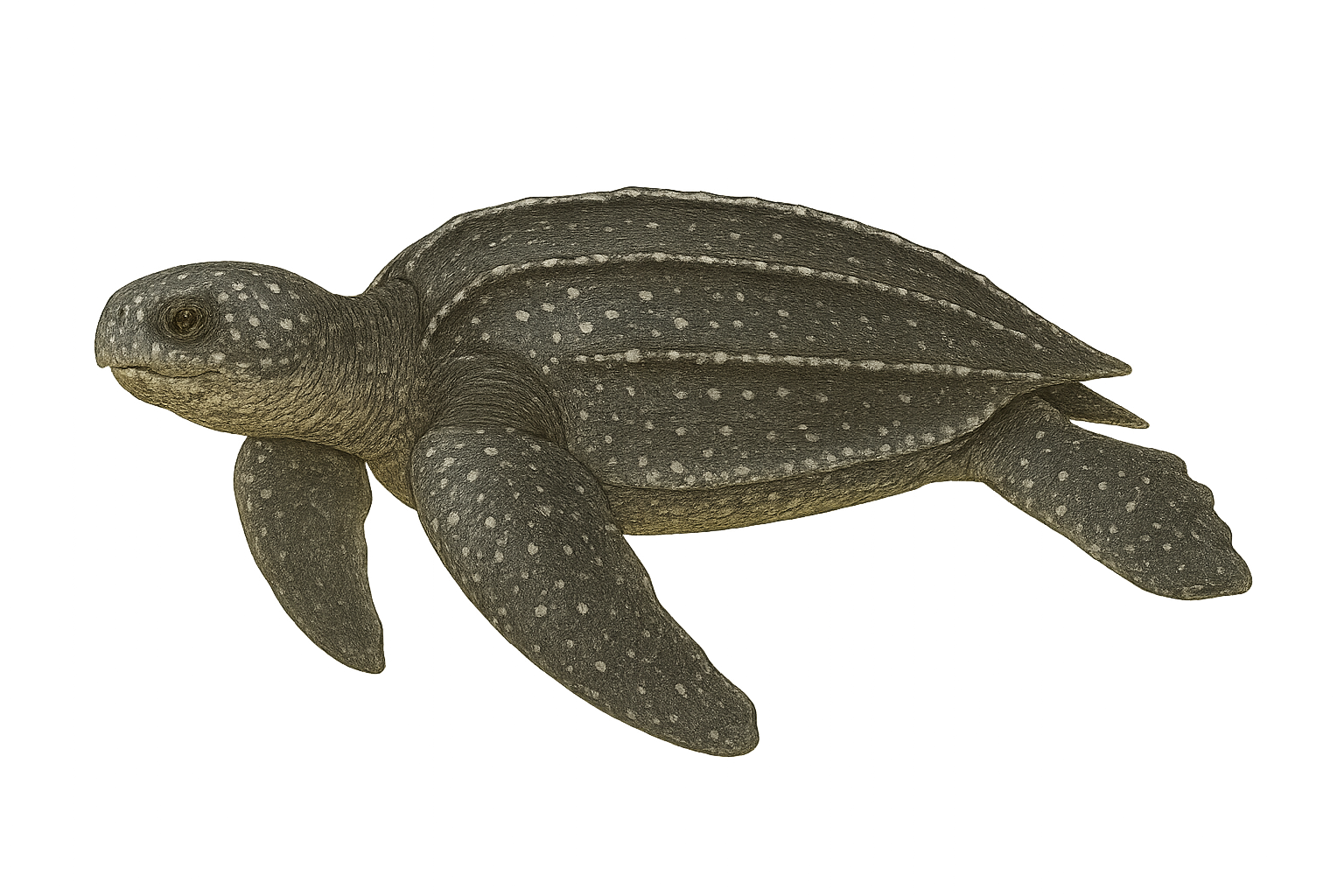Before you go Turtle Watching!
Curaçao is home to several sea turtle species, and one of the best places to see them up close is Playa Piskadó, a humble fishing beach that has become a sanctuary of sorts for these ancient mariners.
Four species of sea turtles are commonly found in the waters around Curaçao:
Green Turtle (Chelonia mydas)
Easily recognized by its smooth, domed shell and herbivorous diet, the green turtle is the most frequently seen around Curaçao. Juveniles may eat jellyfish and small crustaceans, but adults graze primarily on seagrass beds along the coast.
Chelonia mydas
Hawksbill Turtle (Eretmochelys imbricata)
Known for its beautiful, serrated shell and narrow beak-like mouth, the hawksbill turtle plays a key role in coral reef health by feeding on sponges. Though rarer, it is occasionally sighted around rocky reefs and drop-offs.
Eretmochelys imbricata
Loggerhead Turtle (Caretta caretta)
These powerful turtles with massive heads are less common but sometimes migrate through Curaçaoan waters. They favor deeper waters and feed on hard-shelled prey like conchs and crabs.
Caretta caretta
Leatherback Turtle (Dermochelys coriacea)
The largest of all sea turtles, leatherbacks are very rare around Curaçao. Deep-diving and migratory, they are typically seen far from shore and feed primarily on jellyfish.
Dermochelys coriacea
Playa Piskadó (Playa Grandi)
Playa Piskadó, located in Westpunt close to Cliff Villa Penisular, on the island’s northwestern tip, is a small working beach used by local fishermen. “Piskadó” means “fisherman” in Papiamentu, the local language, and the beach still honors its traditional role as a fishing hub.
Why So Many Turtles Here?
Fishermen at Playa Piskadó often clean their catch onshore, tossing scraps of fish back into the shallow waters. This steady stream of food attracts a regular group of sea turtles, who have learned to visit the area daily for an easy meal. It’s one of the few places in the Caribbean where you can reliably snorkel with wild turtles just a few meters from shore.
Snorkeling Experience
Crystal-clear water, calm surf, and an easy beach entry make Playa Piskadó ideal for all ages. Snorkelers can witness turtles gliding gracefully beneath fishing boats, occasionally surfacing for air, all in their natural environment.
Conservation Concerns
While the turtle presence draws many visitors, local marine conservationists have raised concerns about unregulated feeding, boat traffic, and human disturbance. Turtles are wild animals and benefit most from respectful, low-impact tourism.
To address these concerns, the Curaçao Sea Turtle Conservation Program and STINAPA (from neighboring Bonaire) have worked with local groups to promote education, guidelines, and visitor awareness.
Responsible Turtle Watching: Do’s and Don’ts
To protect Curaçao’s sea turtles and their fragile habitats, follow these guidelines:
✅ Do:
Observe from a respectful distance—especially when turtles are surfacing or resting.
Use reef-safe sunscreen or wear protective clothing.
Keep voices and splashing to a minimum.
❌ Don’t:
Touch or chase turtles—they may appear calm but can become stressed.
Feed turtles—it alters their natural behavior and diet.
Stand on coral or seagrass beds—these are critical food sources and habitats.
A Brief History of Playa Piskadó and Westpunt
Westpunt is one of Curaçao’s oldest and most rural settlements. Generations of Afro-Caribbean fishermen and farmers have lived here since colonial times, and fishing remains a vital part of local culture. Playa Piskadó has long been the village’s maritime heartbeat—where boats were launched, nets were mended, and catch was shared.
Over the last two decades, as ecotourism grew on Curaçao, Playa Piskadó transformed from a purely working beach to a world-renowned turtle-spotting site. Local entrepreneurs now rent snorkel gear, sell fresh fish, and offer boat tours, turning conservation into livelihood—when managed responsibly.




